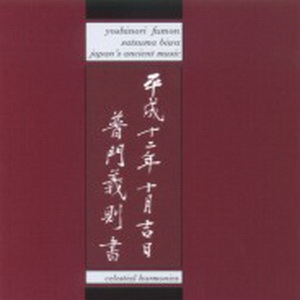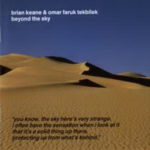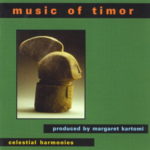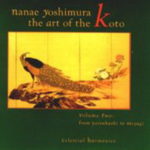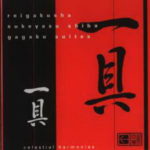Description
The gentlemen from the Buena Vista Social Club have some unexpected competition from the Far East in the form of ninety–year old Yoshinori Fumon, born in Tokyo in 1911. Celestial Harmonies is pleased to add to its catalogue of important cultural documents, a recording by a master without equal in the tradition of ballad singing. Says John Schaefer of WNYC-FM, producer of New Sounds, “This is some of the most rarefied music I have ever heard.”
During Fumon’s childhood and youth in Nara, near the Kansai region metropolises of Osaka and Kyoto, the biwa was one of the most popular forms of musical entertainment in urban areas with some performers reaching a status of fame comparable to that of popular music artists today.
Biwa is a general term in Japanese for lutes that have frets and are plucked with a wooden plectrum. Early forms of biwa were introduced to Japan from the Asian continent well over a thousand years ago. With the exception of modern instrumental compositions, biwa music involves musical recitation to the accompaniment of the instrument. “Accompaniment” of the voice by biwa is quite different to accompaniment as practised in most Western music: the singer–reciter plays biwa in preludes, interludes and punctuating strokes between phrases of text, so that there is little overlap of vocal and instrumental sound. Clear enunciation and communication of the text to those listening is of utmost importance, even in segments where the vocal melodic style becomes florid.
In the modern era, Kokichi Nishi and Tsunekazu Yoshimuzu came from Kagoshima to the new musical capital, Tokyo, and from the mid–1880s, taught the regional music style to a substantial number of students. Both were summoned to perform for the Meiji Emperor, who expressed particular enthusiasm for the performance style of Nishi. It was from this time that the recitation and instrumental tradition was refered to as Satsumabiwa, and began to acquire popularity throughout Japan as a narrative style that reflected contemporary values in keeping with nationalist ideology of the late Meiji era.
It is the seiha, or “orthodox school”, performance tradition within which Fumon learned during the 1920s and early 1930s. His repertory of instrumental pattens which can be used improvisatory in each performance represents an aspect of the tradition no longer heard in performances by other Satsumabiwa players. Trained by performers from Satsuma at the end of modern biwa music’s “golden age”, Fumon is the only such seiha performer to have remained active beyond the late 1980s, and to have passed on his skills and knowledge to a small number of students. He is the last survivor of this ancient tradition.
This rare and important recording has been put together with the very highest level of expertise. Booklet and annotation are provided by Professor Hugh de Ferranti, Departments of Asian Languages and Cultures/Musicology, University of Michigan and Thomas Charles Marshall, a student of Fumon sensei since 1995, who also produced the recording.
CD review by Ian Dearden
What an extraordinary record company is Celestial Harmonies!
At a time when the world is shrinking, and major label record companies are going out of business, here is a company that is dedicated to recording and distributing the obscure, the fascinating and the arcane in world music, and doing so with the highest of production values, both in terms of recording quality, and of the presentation of the CD, the booklet, and the research and writing of the liner notes.
This CD is not one for the fainthearted – Japanese noble ballads, featuring repetitive single note patterns on a Japanese lute (biwa) interspersed with male vocal recitative, in Japanese.
The cover booklet provides a detailed history of the tradition of biwa narrative recitation known as satsumabiwa, which is featured on the CD.
The repertoire extends back to the 16th century, and features songs about heroic fi gures and events in Japanese history.
Although popular in Japan in the first part of the 20th century, the tradition of satsumabiwa is disappearing, and Fumon Yoshinori, born in 1911, is the only performer of this style of music active beyond the 1980s.
For lovers of Japanese language and/or culture, this CD is an important documentation of, and link to an era which is fast fading into the past.
The ballads on the CD are transcribed in Japanese (but in the Roman alphabet) as well as translated into English.
It’s not easy listening by any means to Western ears, but for those who can appreciate it, it is a valuable insight into an important part of our world’s music.
